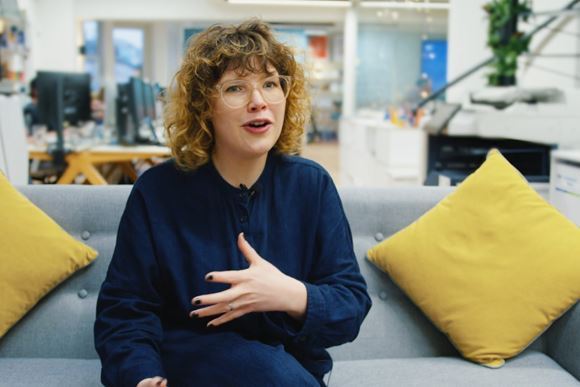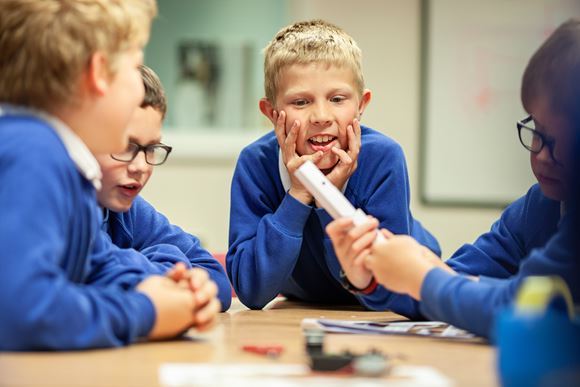Asking better questions
Published 5th March 2021
Tony Ryan's editorial in D&T Practice 2.2021
I was recently privileged to be asked to present at a roundtable discussion that in an ordinary world would have been held at Westminster Palace, but as is the case with all meetings at the moment, was on Zoom. Through these talks (sponsored and organised by the ERA Foundation), the objective is to investigate ways to support UK Manufacturing and skills in a post-Covid World.
These roundtables provide an opportunity to present the merits of a design and technology education to politicians and key industry decision-makers and to look at the changes required in broader education to prepare young people to grow and thrive in an increasingly complex and technological world.
I am an avid podcast listener. Besides our podcast Designed for Life (obviously), the High-Performance podcast with Jake Humphries and Professor Damian Hughes is my must-listen podcast weekly. A recent episode had Dilbagh Gill, CEO and Team Principal at Mahindra Racing as a guest. Sometimes you hear someone say something that simply hits the nail on the head. When asked why he had aspirations to teach before he retired, his response was, “When we went to school, teachers taught us how to memorise answers. In today’s society, answers are readily available; we need to be teaching students how to ask better questions.” Spot on!
For years now, our subject has struggled to find its way in an education system dominated by a government obsession with knowledge acquisition. Pre-eighteen there has been no place for skills acquisition alongside knowledge, and the acquisition of so called ‘soft skills’ that are so important within today’s society are left pretty much to chance in many schools. It is important to note that while a forced restrictive curriculum shackles the state system, the private sector appears to openly embrace acquiring skills alongside knowledge.
The recent speech made by the Prime Minister at Exeter College was the first time I have heard a PM speak of skills since Blair pre-2010. While Mr Johnson was referring to Post-18 education only, I quote:
“All of us in this country need students to have those practical skills – we need those practical skills collectively, as a society and as an economy – more than ever.”
I am an eternal optimist, but I do believe that as we seek to recover the economy post-Covid, we will no longer be able to ignore that skills and knowledge are of equal importance. One without the other is an incomplete package and sells our young people short. It is up to us all to make a compelling case for our subject, demonstrating that when taught well, there is no subject like it on the curriculum for allowing students to apply acquired knowledge; while at the same time mastering the skill sets and character attributes that will help them to thrive in an increasingly fast-paced and competitive world.
The chart show here has been created to simplify and exemplify the main issue that we have now and within the emerging planned educational pathways. Up to age sixteen, the vision for our students is based around knowledge acquisition centred around a pre-defined list of subjects (Ebacc), with the creative subjects being squeezed out of the curriculum and marginalised.
At sixteen, the government's vision is that students will choose between deciding that they want to go to university and therefore following an A Level route or wishing to pursue a technical education and taking T Levels. I have a slight issue with this vision as its simply not that clear cut: academically successful sixteen-year-olds should be able to follow a technical pathway, and those struggling to pass successfully through GCSEs should still be able to aspire to attend university.
When the government first started talking about T Levels, the talk was about the need for parity in the system with the importance that parents and students not viewing T Levels as a second-class substitute for the established A Level route paramount. This was always going to be a challenge as until universities demonstrate that they see no difference between the two, there was always going to be a confidence issue around these new qualifications.
The government is now making slightly different noises with suggestions that 50% of students (assumed incorrectly in my opinion to be just the highest achievers) taking the A Level and university route and the other 50% (the assumption being that these students are academically less able, again incorrect) taking the technical route through T Levels. This assumption alone could sink the T Levels before they have had a chance to succeed. And I’m not even going to tackle how employers nationally will cope with the requirement for a 45-day work placement for each T Level.
I am also concerned that the DfE appears to be squeezing out a range of established Level 3 qualifications to ensure the success of T Levels.
Even with all of the above, I believe that design and technology is well placed to demand its place within a post-Covid curriculum offer, but we must be true to what we believe. There are no short cuts to success; there is no room for an art & design curriculum offer masquerading as design and technology as we need to teach the knowledge, skills and character sets that will truly prepare our young people to thrive in a recovering economy led by science and technology.
Tony Ryan
Chief Executive Officer



